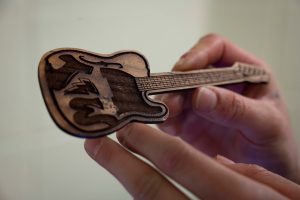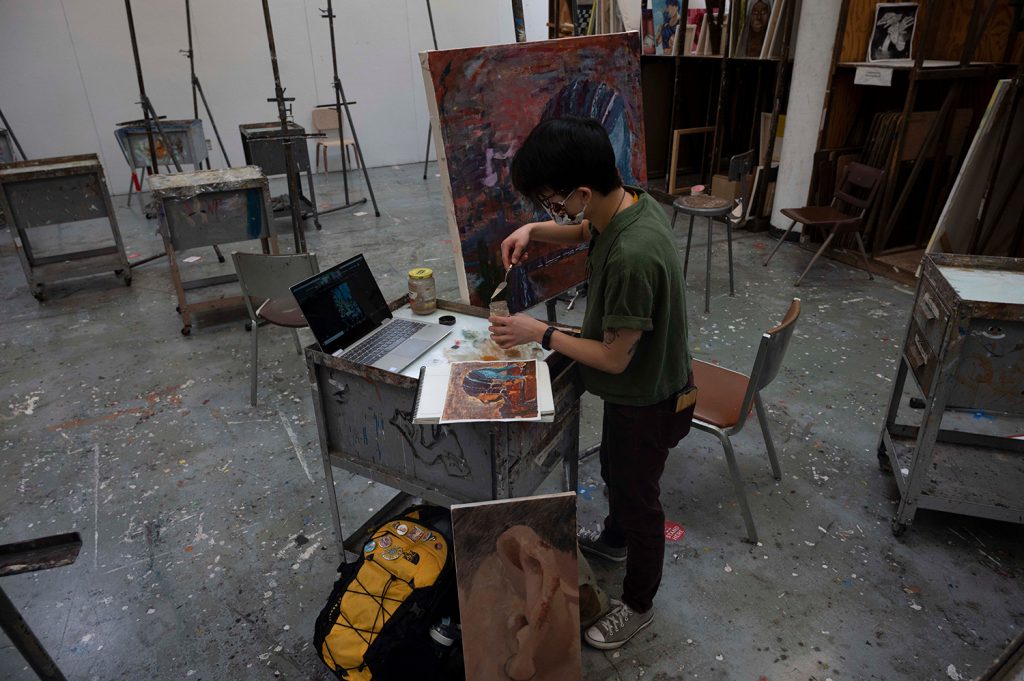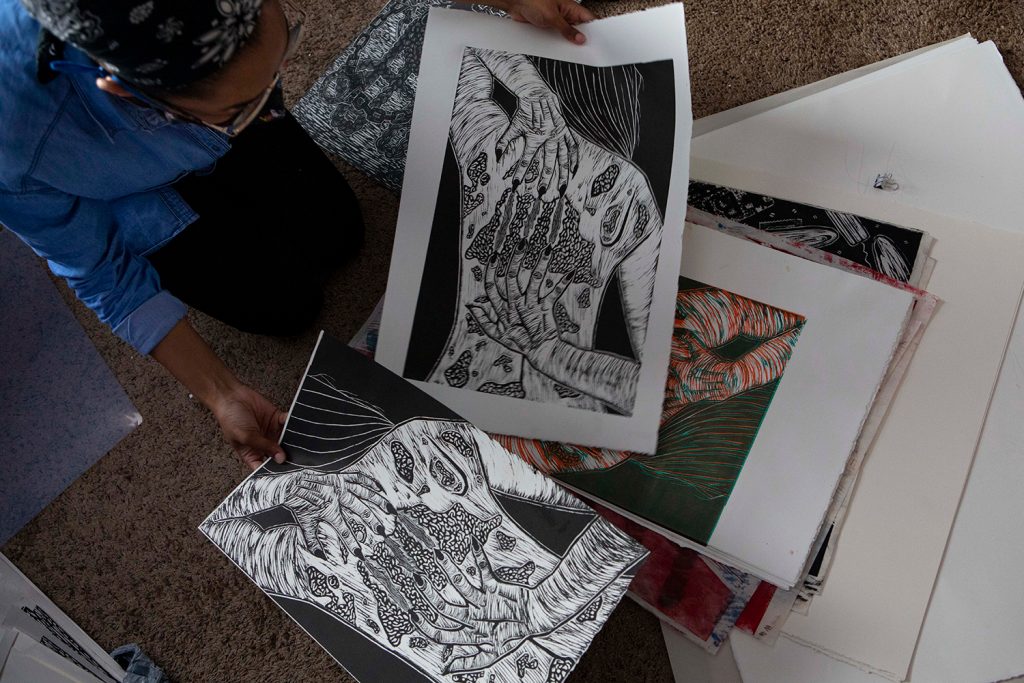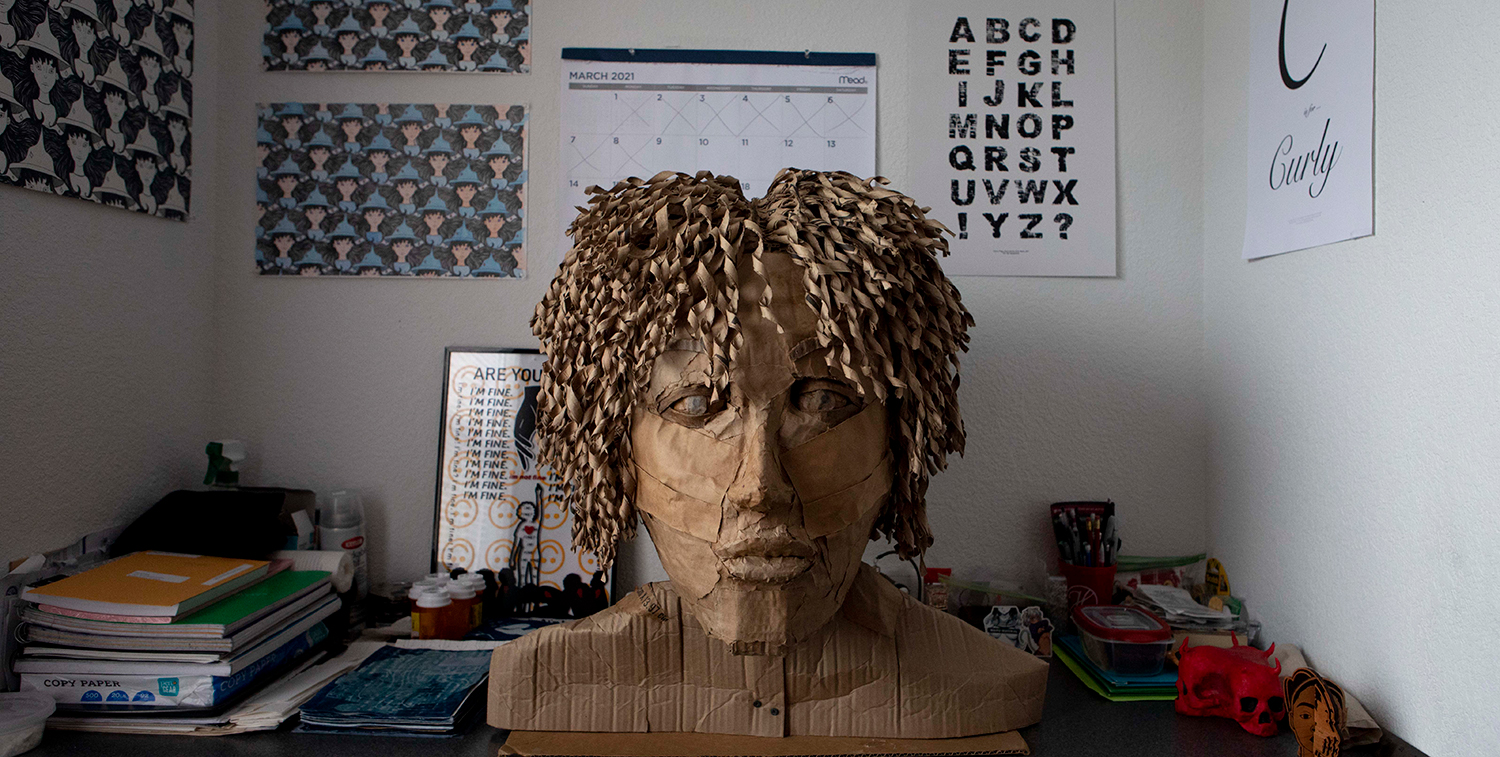Jen Worley, a junior art education student from Louisville, created her piece, “Reckless Love,” based on her struggles with religion. The aluminum heart with a black patina displays peekaboos of a bright red interior that are made visible by several large holes and nails coming through the piece.
The piece was inspired by Worley’s struggles with religion.

“A lot of my pieces recently have been about being queer — several pieces on marriage equality and harmful experiences within the Christian church as a queer person,” she said.
Another piece of Worley’s, titled “God still loves you,” resembles the stained glass inside of a church made of vinyl with three layers of glass in a wooden frame that holds the image of two women kissing in the center.
Worley gets inspiration from her life experiences and impressionist artists like Claude Monet and Edgar Degas. She runs an Instagram account to share her art and accepts commissions.
Many of her pieces are glazed bowls, sculptures, various styles of paintings including abstract, impressionist, including one resembling a squid out of random objects.
Worley said she doesn’t feel that people of color receive the same opportunities as white people, especially in art.
“Western art is heavily influenced and based on white European styles and rules,” she said. “It can be hard for people of color to feel like they have a place in galleries where such fine-tuned styles and subject matter are wanted.”
While racism and Worley’s observations from being Asian have been strong considerations for the subject matter of her artwork, she has not made any pieces surrounding those issues. Instead she focuses on her experiences with religion or creating work inspired by artists she admires.
Worley said artists of color can often only be seen for their race instead of just being seen as an artist, which is a part of the reason she has yet to delve into those topics.











